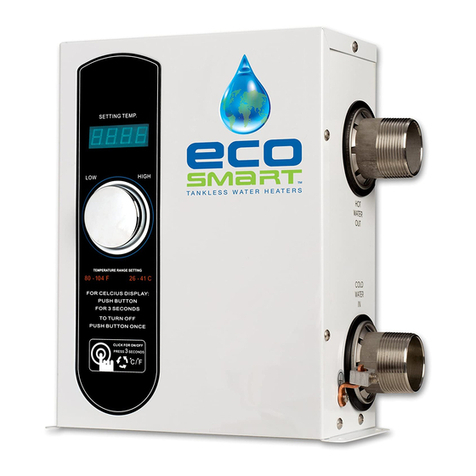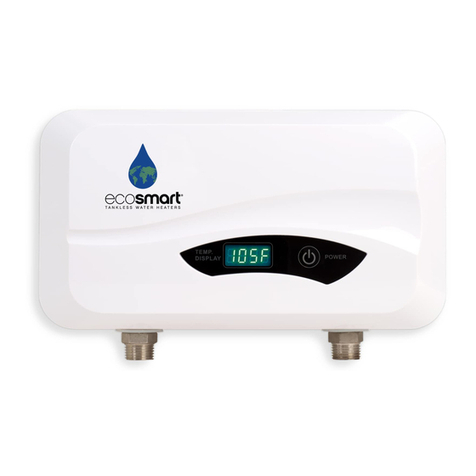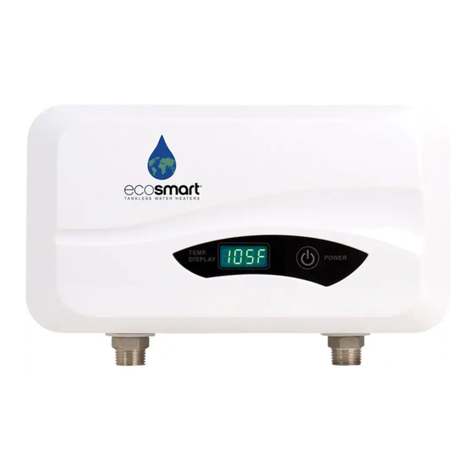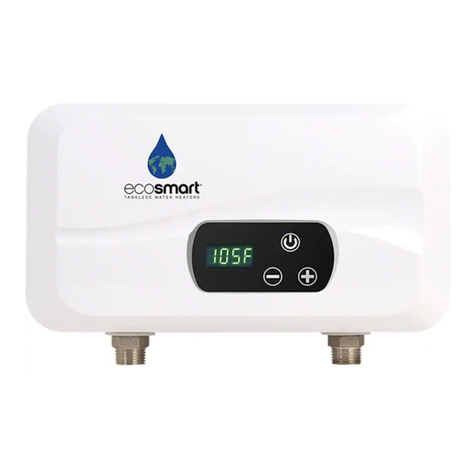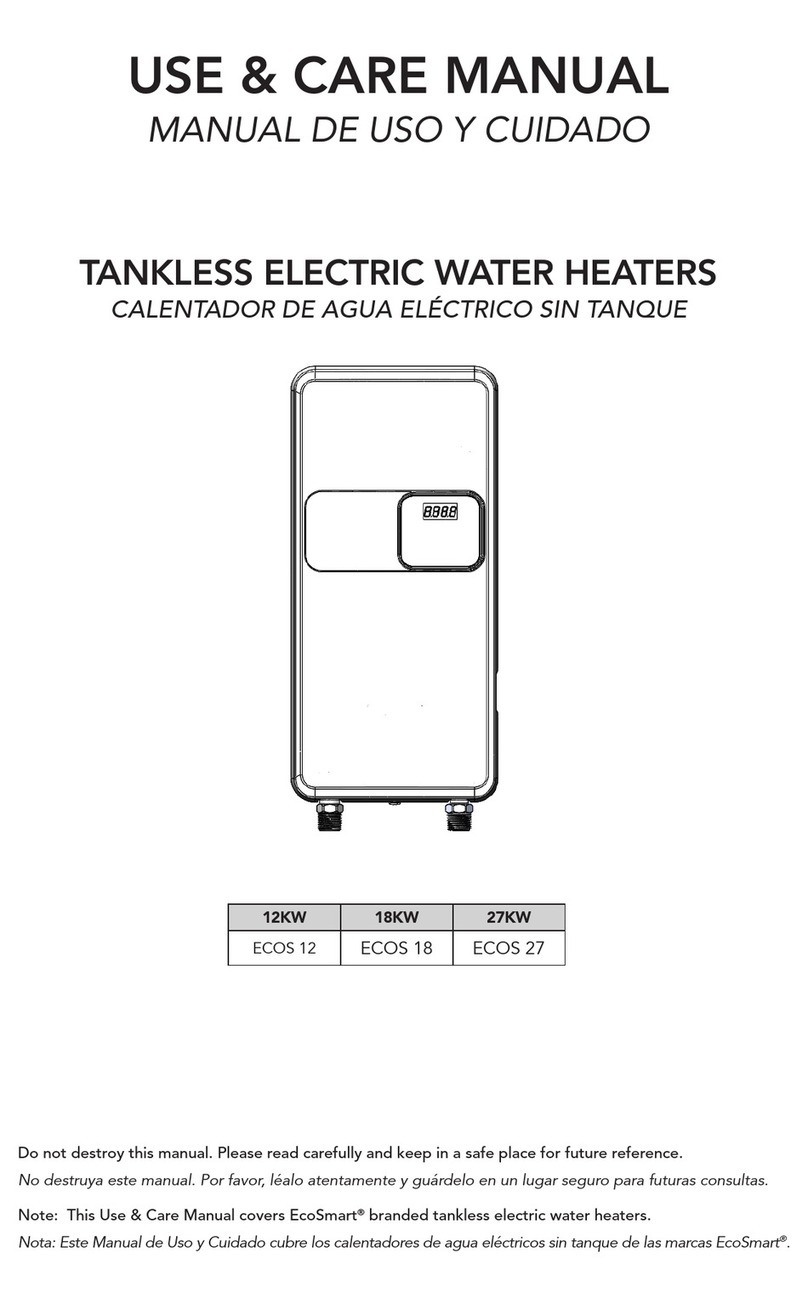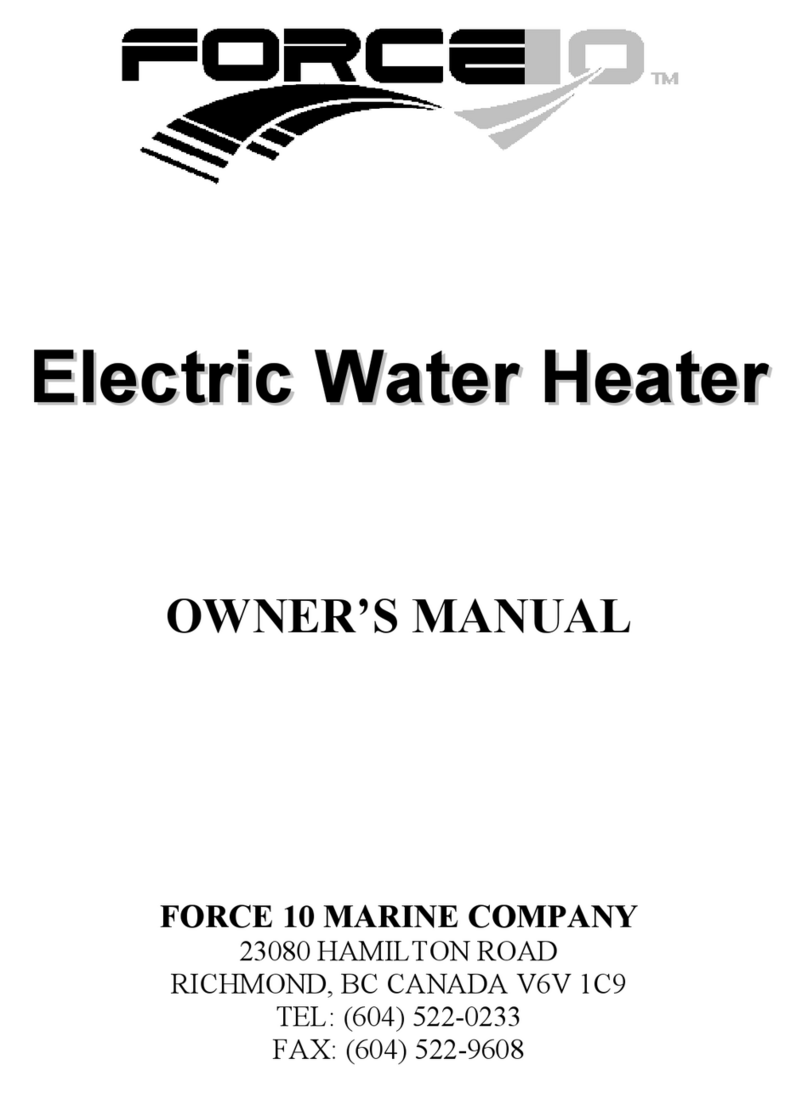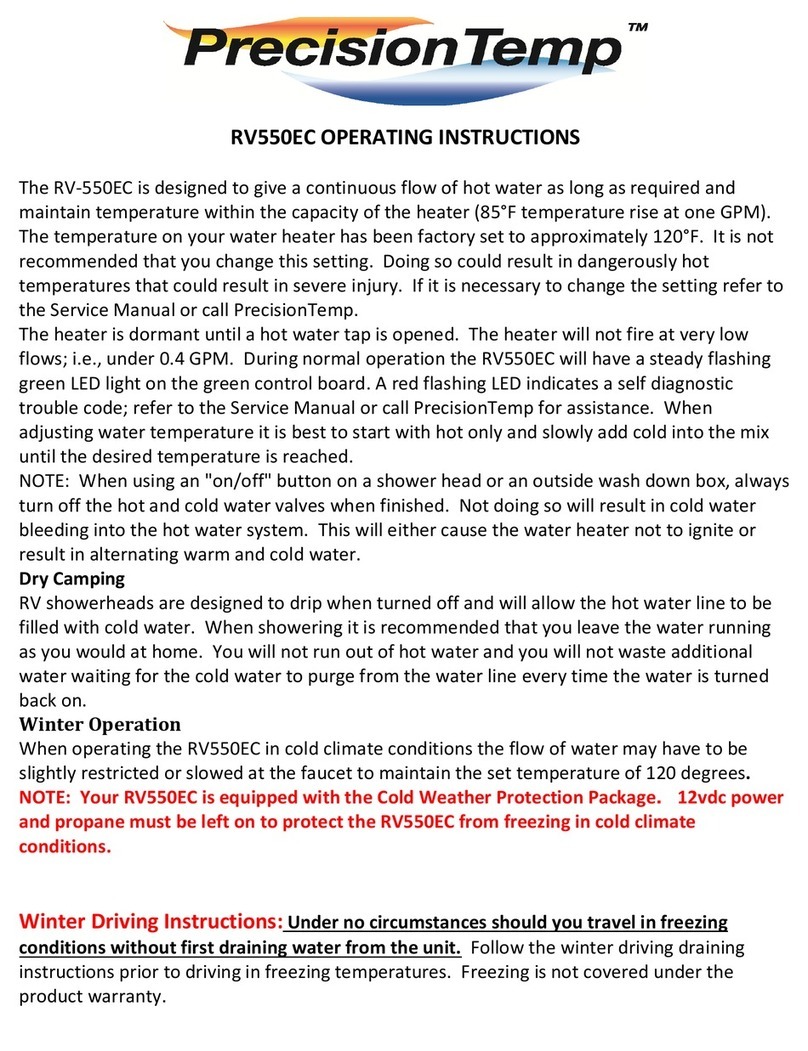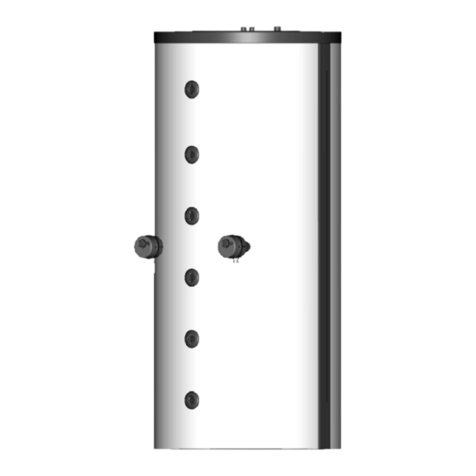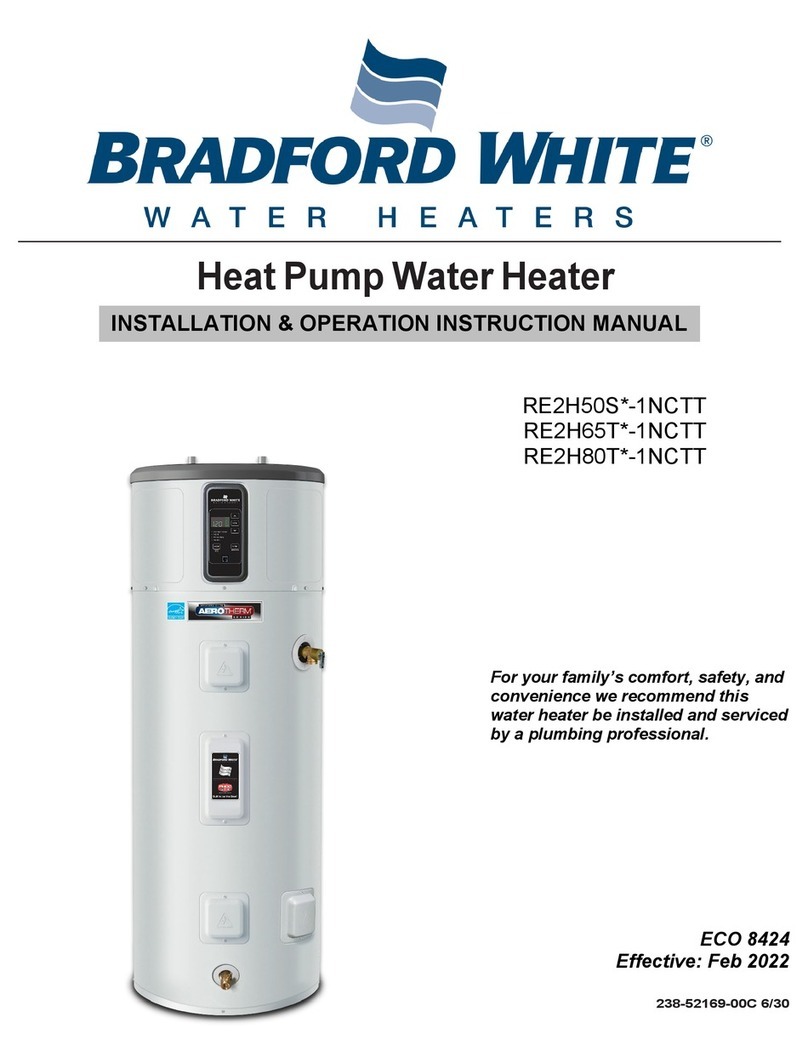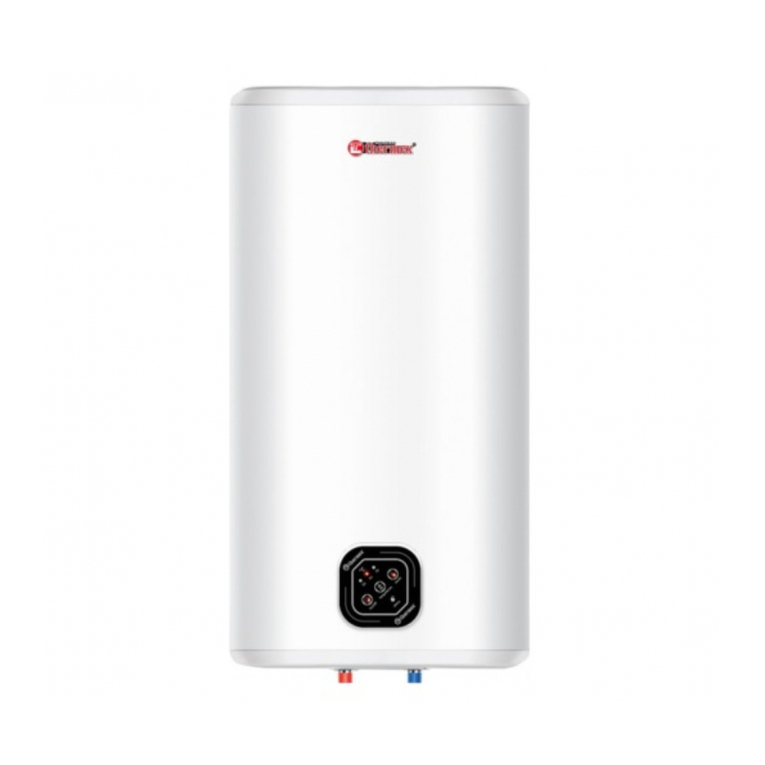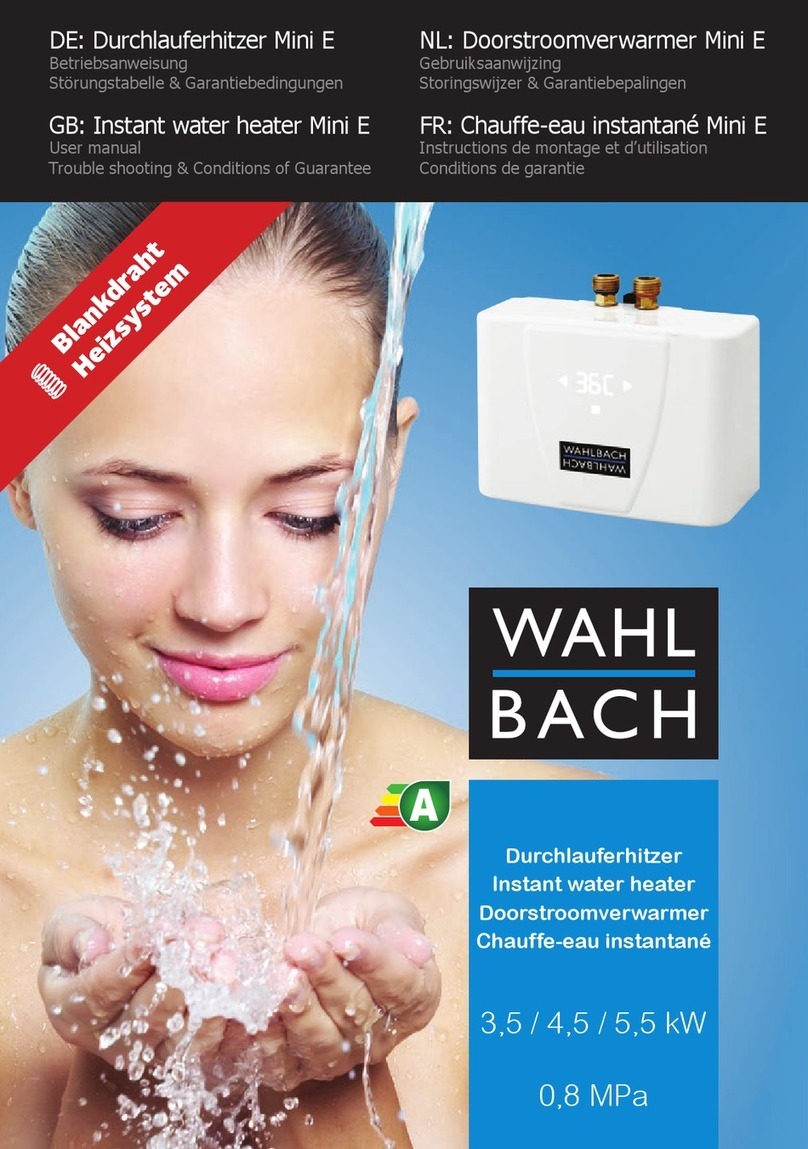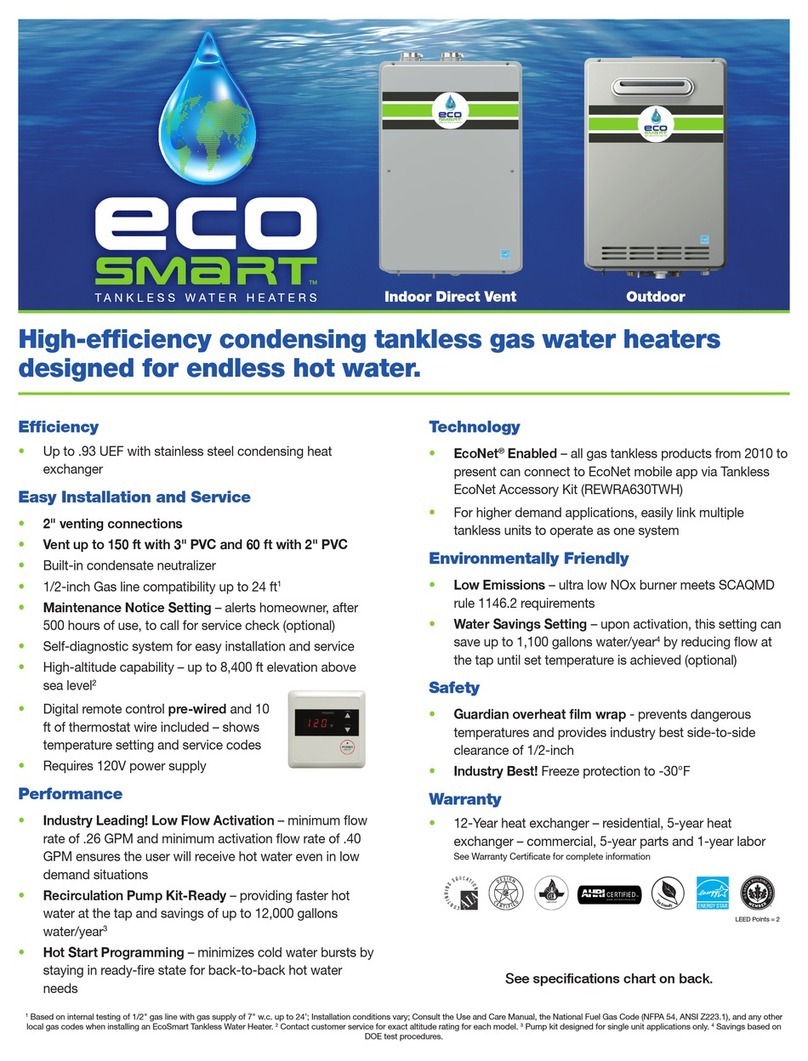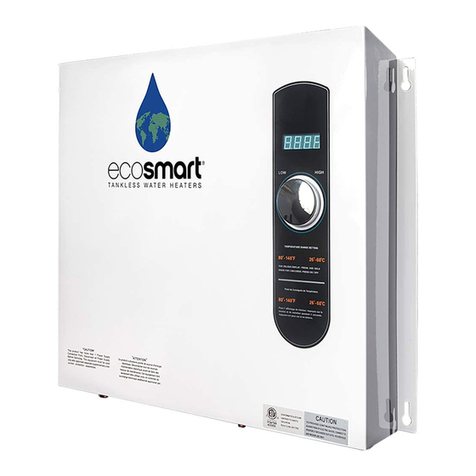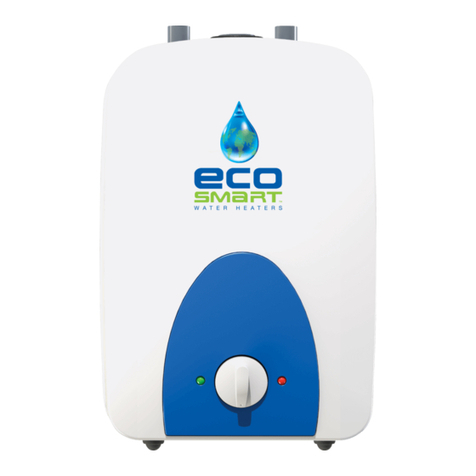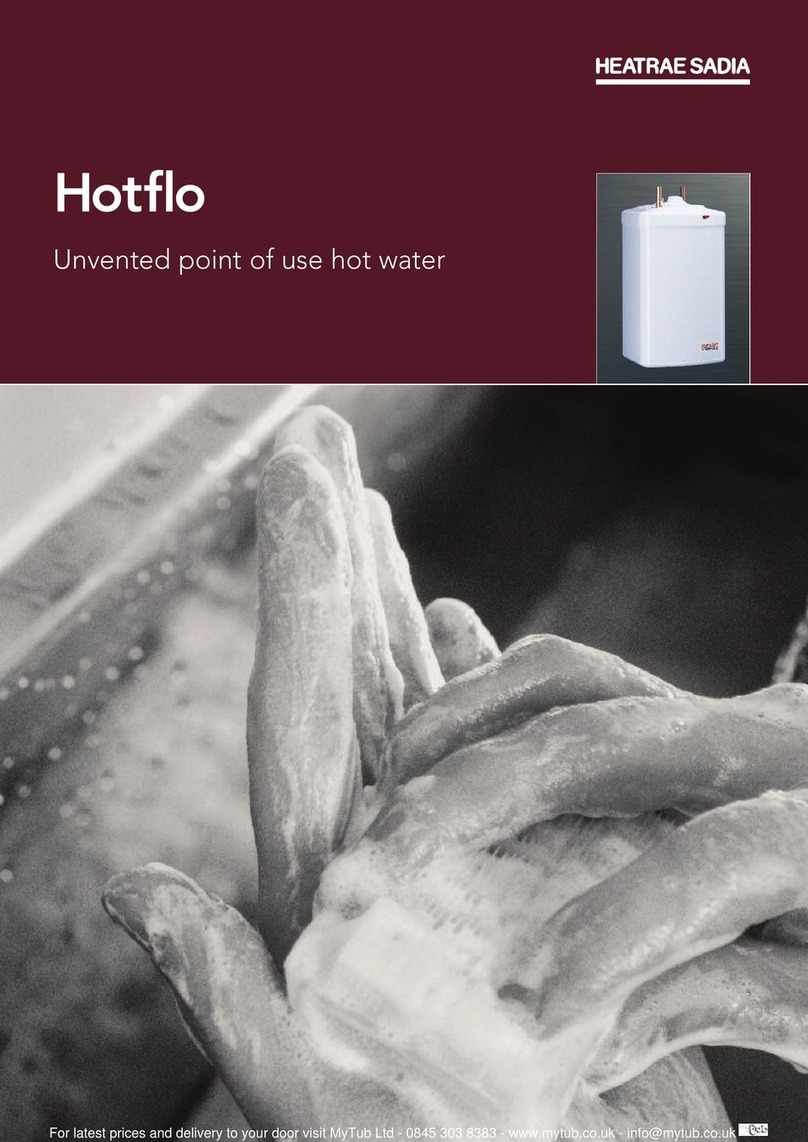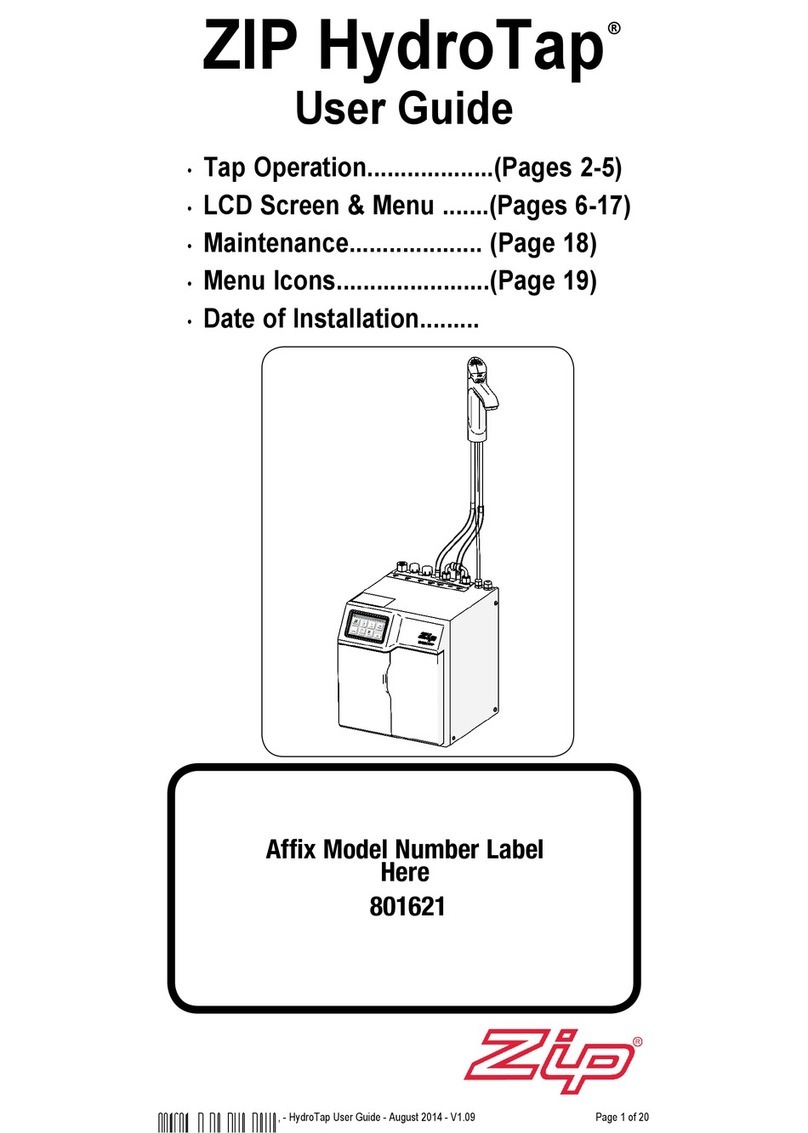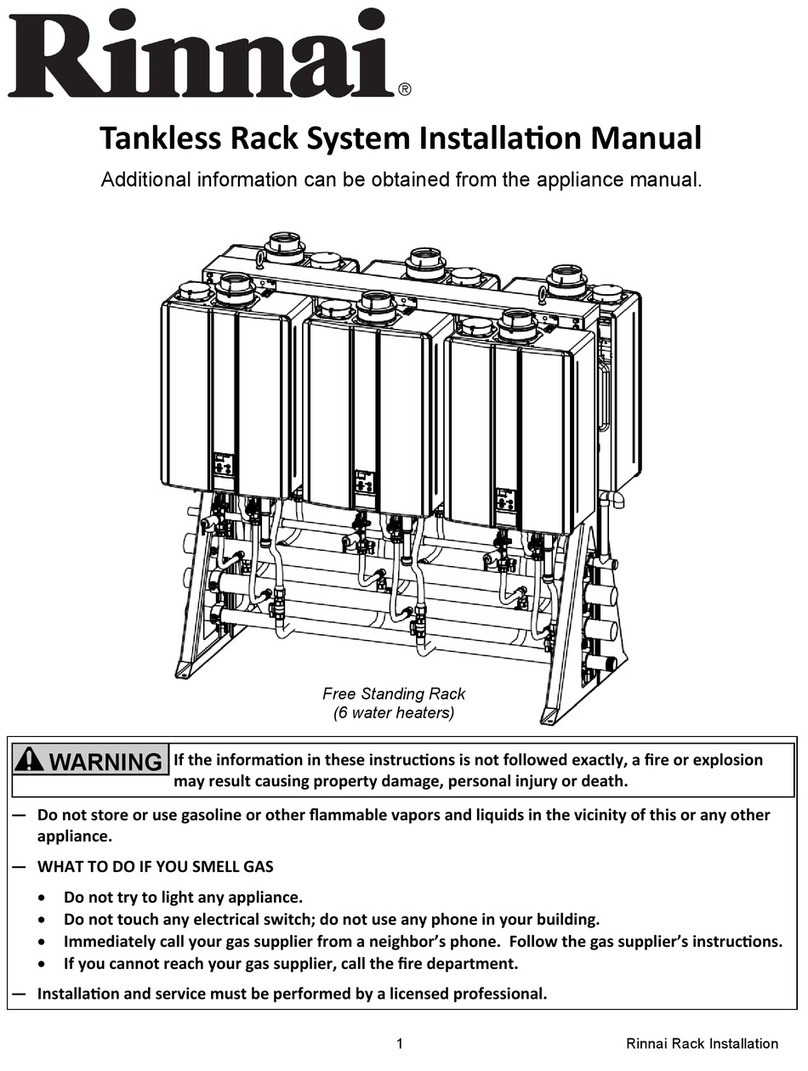
measured at several flow rates to insure that the proper temperature rise specifications are met and that
the unit self-regulates with the varying flow rates.
The following table represents some of the most common technical support questions we receive.
Before calling us, please read thoroughly to see if your question or problem is addressed.
PROBLEM POSSIBLE CAUSE SOLUTION
Water heater is not heating at all (water is flowing but
the unit is not heating at all - the incoming water
temperature is the same as my cold water supply) - the
digital display does NOT light up.
No power or incorrect wiring. Make sure the breakers at main electrical panel are ON.
You may have a faulty breaker or the unit may be wired
incorrectly.
Flow rate is too low / water pressure is too low. Your water heater has an activation flow rate of
approximately 0.25 GPM. If your water flow rate is less
than this level, your unit will not activate. Increase the
flow rate.
Water heater is not heating at all (water is flowing but
the unit is not heating at all - the incoming water
temperature is the same as my cold water supply). The
digital display DOES light up.
Internal part failure. Please call us for technical assistance.
Water heater is heating but the water temperature is not
hot enough. User temperature setting too low. Turn up the temperature setting on the unit. (see
General Operating Instructions section of this manual)
Flow rate is too high. Depending on your incoming water temperature and the
power output of your model, your water flow rate may
exceed the physical heating capacity of your water
heater. Reduce the flow rate at the faucet or slightly
close the shut-off valve installed on the inlet side of
your heater to reduce the inlet water flow rate. (see
General Operating Instructions section of this manual)
Crossed wires. If it’s a new installation, have your electrician double
check the wiring. Is possible that the wiring is incorrect.
Voltage less that 240 volts. The heating elements on your water heater are designed
for 240 volts. When use with a lower voltage, they
produce less heating power. You may need to upgrade
to a larger model. Call your authorized dealer for more
information.
Mixing too much cold water. You do not need to mix as much cold water with your
tankless water heater compared to when you use a
conventional water heater. You may also have an anti-
scald feature on your faucet that is mixing cold water.
These types of faucets can usually be adjusted to reduce
the amount of cold water mixed. (see General Operating
Instructions section of this manual)
The water temperature at my faucet is less than the
temperature setting of my water heater. Voltage less that 240 volts. The computer chips in your tankless water heater are
programmed with the expectation that your incoming
line voltage is 240 volts. If you have less than 240 volts,
it may affect the reading on your water heater’s digital
display and cause it to read slightly higher than the
actual output temperature. To compensate for this,
increase the setting on your water heater if you need /
want hotter water.
Anti-Scald pressure/balancing valve or tempering valve. Your faucet may have an anti-scald feature or a
tempering valve that automatically mixes cold water
even when you turn your control lever or handle to full
hot. These devices are usually adjustable so you can
turn off the cold mix completely. You can compensate
for this by increasing the setting on your water heater if
14 / 17

















